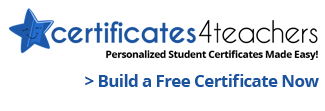
Tweet like your mama and principal are watching.
It can be a challenge to communicate meaningfully in 140 characters, so send off a few tweets to try it out and learn how to say what you need to within the limited space.
School administrator and bloggerBrian Paul Hilloffers additional insights:
Here are some additional benefits of professional development via Twitter, as expressed by participants in a November 2011Education Weekdiscussion forum titled Is the Best PD Happening on Twitter?
If you can set aside an hour or so (be careful because time flies on Twitter), go to Twitter and you will be met by colleagues from all over the world who are not only willing to help you find great resources, they will set you up with groups who can expand your content knowledge. These interactive chat sessions can be very beneficial to us as practitioners.
During the school year, teachers are master balancers. In addition to the daily diet of rigorous academic content and classroom management, colorful sticky notes and intricate calendars remind us of pending tasks. Conferences next week! Make parent phone calls! Prep for Friday PLC! With all the hubbub, it can be overwhelming to tackle a large project or learn a new skill. Fortunately, summer offers a slightly slower pace thats perfect for tackling serious professional development. Conferences and seminars give you access to experts but theyre not your only option. If youre looking for a more customized plan, here are a few ideas to get you started on your own DIY summer professional development. Tap Into Local Resources Students love when we make lessons come alive with a tactile artifact or a perfectly timed field trip. Take time this summer to connect with local resources that can expand your lessons beyond the textbook. Start by making a quick list of local museums, aquariums, or zoos you want to visit and what collections might connect with your academic goals. Most institutions have an educational coordinator who can help you brainstorm the best way to access museum resources, direct you to field trip grants, or discuss increasingly popular backwards field trips. Even if you cant fit a field trip into your curriculum, museum visits may yield helpful access to primary source documents. Think beyond admission-charging institutions. Universities and historical societies often have impressive artifact collections and archives available to the public. Businesses and camps are another out-of-the-box option. Maybe a local yoga studio has resources on building kids social emotional skills. When 5th graders at my school studied ecosystems, we followed up with a trip to a local camp to see their functioning aquaponics system. Your community is full of educational gems so use the summer to uncover which ones work for you. Improve Your Tech IQ Summer professional development is a perfect time to experiment with new technology. If youre already tech savvy, challenge yourself to grab an Echo Pen to prep for recording mini-lessons or set up a green screen to practice for the live history broadcasts youve been wanting to work into your social studies curriculum. If you dont have any new tech tool in mind, check out a compilation list of new Education Worlds coding class.
Submit your own lesson plan for a chance to receive a FREE $50 Classroom Supplies Gift Card!
Debunking Education Memes, Part Two
Educators on Twitter often discuss whats working in their classrooms and how theyve addressed important issues much like you might with your peers.
Dr. Ken Shore: Classroom Problem Solver

DeWitt offered the following example: When I want to learn more about social and emotional learning, technology or media literacy in the classroom, I read blogs and posts by Sean Slade, Lyn Hilt and Shawn Blankenship. Or I join the elemchat session on Saturdays at 5 p.m. EST and talk with Judy Brunner.
In a November 2011 post from Finding Common Ground, hisEducation Weekblog,Dr. Peter DeWittwrote:
Now you need to find like-minded people to follow. Basically, this means subscribing to their tweets (the tweets of those you follow will make up your Twitter stream when you log in). Use Twitters search feature to find people in your field. You can search using terms like teacher or principal. Once you find a few, you can also check out whotheyfollow and begin following them as well.
DIY Summer Professional Development
Its like having a professional development seminar at your fingertips 24/7, ready to discuss the educational issues that matter to you the most.
top education news, lesson ideas, teaching tips and more!
Using Twitter for Professional Development
If you arent yet familiar with Twitter, its a social networking platform where users share everything from what they had for breakfast to professional dilemmas all in
Hesitant to get started? Hear what proponents of social media-powered professional development have to say. Then explore Education Worlds tips for easing into the process.
You might also want to follow educator-related hash tags. A hash tag is a way for people to search for tweets that have a common topic. The hash () mark precedes the topic name. For example, tweets relevant to elementary-school educators can be found as a group because they all share the elemchat hash tag.
140 characters or less. It attracts a wide spectrum of users, including a vast and growing contingent of educators.
Any Twitter user can create a hash tag simply by adding it to his/her own tweet. The tags are therefore not only a way of organizing tweets by topic, but also a way of creating communities of people interested in the same topic. In addition, sometimes a hash tag is used to organize a live chat event, where participants sound off by tweeting about a given topic.
Hill mentions a helpful tool for managing the constant flow of information on stapaperis great because it allows you to save links to articles straight from your Twitter timeline. And it works with Twitter apps as well. So now, as Im scrolling through a cluttered timeline at some point during the day, if I see a link to an article that sounds interesting, I just save it to my Instapaper account. Then, when I get home, I have a whole list of links to articles that I wanted to read, that were posted by people I follow on Twitter.
Colleagues are a greatly underutilized professional development resource within the school building, and staff often remark about the benefits of setting aside time for collaboration with co-workers. What if the concept of colleague was expanded to include the wider community of educators nationally, and even internationally?
Tips for Managing Your High-Needs Classroom
Thank you for subscribing to the newsletter!
Online PD: Integrating Brain Breaks in All Classrooms
This takes just a few minutes. Be sure to fill in your profile with information about being an educator. Dont worry you dont have to share exact details. In fact, keeping it a little more broad (such as middle school language arts teacher interested in classic literature, great student writing and good coffee) could be more beneficial, since it will lead more folks with common interests to you. To learn the basics of Twitter in plain English, check out Steven AndersonsEducators Guide to Twitter.
Receive timely lesson ideas and PD tips
The term professional development conjures up thoughts of travel, conference fees, arranging substitutes, and loss of precious instructional time. But does it have to entail all that? Actually, no. A growing number of educators are usingTwitteryes, the microblogging platform Twitteras a quick, easy, low-cost alternative.
Though Twitter is a great big free-for-all, its up to you to protect yourself and your career when using it. Bear in mind when tweeting that anything you write could be seen by your personal and professional connections and act accordingly. If you wouldnt say something in front of a superior, dont tweet it even if you have your account set to private. Being set to private doesnt prevent others from re-tweeting your tweets to their followers.
Improving your tech IQ doesnt mean you have to choose cutting edge tools. Summer PD is about working on skills new to you. Choose technology challenge that fits your needs. If youve been itching to move homework assignments to Google Classroom, get going! If you keep hearing about engaging classroom websites, start thinking about how you might use one. Whatever technology you decide to focus on, savor the extra time you have to master the basic functions and plan how to implement it in your classroom. Harness the Web The internet offers a wealth of free resources for teachers but it usually takes some time to determine which ones will work for your summer development plan. First, figure out what format youre interested in. If you want the weight of a book in your hand, use the web to find curated reading suggestions for teachers. You can plan a trip to your local library based on teacher book lists on everything from classroom differentiation to learning innovation. If audio is more your beat, download a podcast app and learn from teachers, psychologists, and other school-based professionals. I like the Harvard EdCast for up-to-date interviews with education experts and authors. For conversation and connection, participate in Twitter ed chats. Many professional organizations host and publicize their own or you can use this spreadsheet to find one that works for you. Make It Your Own Whatever combination of reading, visiting, or Tweeting you decide upon, make it your own. Part of being a teacher leader is prioritizing growth. This summer, design a professional development plan thats perfect for your needs. Written by Marissa King Marissa teaches 5th grade at Tulsa Public Schools where she spills tea and misuses the coolest slang. She is also a Yale National Fellow.
Participant John Bennett added, With a search of hash tags, the notation of Twitter accounts in Internet pieces of personal interest, and general searches, one can identify [information] of personal interest. In most cases, the [information to be gained from] tweets is expanded beyond the 140-character limit, as most often those 140 characters include a link to another interesting posting.
I think its important for anyone working in education to have a Twitter account. We have to be consumers of information. Constant consumers of information. Information that is current and important. If we arent doing this, then we become stagnant in our work and complacent in our profession.
Tips for Managing Your High-Needs Classroom Lets talk about capacity. If you look into the world-weary and sleep-deprived eyes of any educator this year, youll realize one truth: meeting the complex needs of each of our students is no small task. As educators in the 21st Century, we are constantly on a quest for the golden mean between individualized curricular plans and teaching densely populated classrooms. We employ technology, standardized testing, creative grouping, and anything else we can possibly imagine that might ignite engagement to make each lesson feel tailored to the kids in our courses. But the differentiation of need is often still just out of a perfectionists reach. And teachers are perfectionists, in the sense that we spend our lifes work finely tuning our practice always looking to improve, to refurbish, to inspire. Nonetheless, even your most veteran educators struggle with the high demands of the modern education system. Today, Education World examines the kinds of student needs youre likely to encounter at any academic level, as well as essential tools every educator should have in their pedagogical toolkit to make the sometimes seemingly impossible, very possible. Student Needs Were not going to pretend that we can write a simple article that can problem-solve every type of student need you are going to find in the classroom. Our jobs are nothing if not unpredictable. And yet, if we were to break down the types of needs students tend to have in the middle of your lesson that might create barriers to their learning, we could very probably generalize most of them into behavioral needs and academic needs. When we say behavioral needs, were referring to student struggles with some of the soft skills associated with the expectations around being a student: listening during a lesson, staying focused during worktime, staying in the chair when appropriate, modulating voice, transitioning from activity to activity, self-monitoring, avoiding excessive distraction, being respectful to the community, and participation. When a student struggles with managing these classroom habits, no matter what the cause or catalyst, it is hard to even begin imagining accessing the higher order thinking necessary to achieve in school. Academic needs, on the other hand, are those specifically tied to understanding of the material: content acquisition and skill mastery. Many of our students also struggle with a wide range of characteristics and unique ways of thinking that can sometimes make the substance of the traditional learning process more difficult to manage. In many cases, we find that students are often managing a combination of the two. Regardless of the type of needs your diverse student population is facing, lets be clear: the first step when you see students not accessing the content and skill you are attempting to transmit in your lesson is to identify what is going on. To truly do this, you need to look at each student as an individual. Its too easy to try to group a problem together: this class is struggling with __________. Unfortunately, this approach never gets to the heart of the many different needs sitting in your class. You have to do you research. For the kids you are concerned about make sure you: Check their docs: IEPs, 504s, grades history, testing scoreseverything you have documentation on: What is the narrative here and how might it connect to what you are witnessing? Talk to the student: Whats going on at home? How they are feeling about class? What has their sleep been like? What do they do after school? Reflect on your classroom culture: How is your respect agreement working out? Is your class a rigorous working space? Talk to your horizontal team: What are they noticing with this student in their classes? Whats working for them? What is not working? Talk to the parents: How has the student been at home? Have there been any major changes? What are their concerns? Share what you are noticing. Talk to the support staff (school psychologist, social worker, sped teacher, department head): Is there any information you should know about this student? Do they think a referral is necessary? What do they suggest exploring? Going through this process for each student you are concerned about takes up a lot of time, but is also going to give you the most effective long-term impact. But what do I do in class today? In the meantime, however, you need to make your class period work. Below, find some in-class management strategies to help you best facilitate your high-need classroom, whatever that need may be. 1. Fine-Craft Your Groups: Sometimes, half the battle is how you set the students up in the classroom. Generally, kids get off task when it is too difficult, too easy, not interesting, or if the social dynamics just dont feel right. Homogenous groupings with differentiated assignments for each crew can help kids to feel competent, yet challenged. Giving working roles to students during group work time can keep them engaged in the task at hand, making sure all members take on responsibility for the product. However you decide to group your students in the classroom, it allows you an opportunity for social engineering a successful lesson well before you even enter the classroom. An ounce of prevention, in this case, is often well worth the pound of cure. 2. Master Non-Verbal Signals: Whether you are dealing with insecurities associated with academic rigor or an otherwise behavioral response to external stimuli, teachers run a very real risk of escalating a distraction by making it public with verbal reprimands. Unfortunately, drawing attention to it often rewards off-task, attention-seeking behavior. Instead, have some non-verbal cues loaded into your classroom culture. Some of these can be for everyone in the class; some can be private communication for a specific student. Some that you might consider include: A whole-class signal for quiet and to refocus attention back to you during work time. We like to use a hand, straight up in the air. A signal to identify a specific noise or habit enacted by an individual student that is disrupting class. We like to point to the source of the behavior, hand extended, palm-side down. A signal to suggest a student take a quick break from work and go for a walk or see support staff. A whole-class signal for being interrupted during a lesson. We prefer folded hands, looking down, and waiting for students to correct the behavior of their peers. 3. Have A Break-Out Space: This is a life-saver. This breakout space could be a single desk in the corner of the room, a front table, a chair in a hallway, or even a messy desk. A space that is separate from the general classroom can do wonders. It can be used for impromptu minilessons to clarify or remediate with a small crew, without the distractions of their peers. It can be used for one-on-one conferencing, whether it is for academic support, revision, or behavioral concerns. It can act as a work space for students that tend to get distracted in their regular seating. For many of us, a temporary change in environment can help us to re-center and re-focus when we are frustrated, overwhelmed, or just need help and support. An all-purpose break-out space can help to facilitate just that. 4. Clarify Your System: Finally, it is absolutely essential that whenever there are behavior issues due to high levels of need, students need to very clearly understand what is okay in your classroom, what is not okay in your classroom, and how you approach discipline and support. If students do not know what to expect from you, it can be incredibly anxiety-provoking and make them feel insecure and unsafe. What is your academic protocol? If they are struggling in class, where do they get support? What days are you after school? Where can they work quietly? How can they access support during the class period? If students are struggling in the regular classroom environment for any reason at all, they need to have options. It will make them feel supported and valued as a unique individual learner. What is your behavioral protocol? After the non-verbal signal, what is the expectation if the behavior continues? How many warnings does a student get? At what point will they be expected to leave the classroom for support? Whatever the process is, make sure that your student understand it, and that you are consistent with it. Knowing the next step in the process of consequences allows students some control in the process, which can ultimately curb disruptive behavior. Written by Keith Lambert, Education World Associate Contributing Editor Lambert is an English / Language Arts teacher in Connecticut.
Receive timely lesson ideas and PD tips

Making professional connections via social networking can not only result in a lot of great sharing of ideas and resources, but also combat the sense of isolation that many teachers experience.
On days when I am trying to figure out how to help my students, whether theyre in elementary school or the graduate course I teach, I turn to the experts. Im not referring to the people who we see at conferences where we pay a conference fee to be inspired for an hour. I am referring to our colleagues who are only a password away on Twitter.
July Every-Day Edits Use Every-Day Edits to build language skills, test scores, and cultural literacy. Be sure to see our tips for using Every-Day Edits in your classroom. Hot Diggity DogBlueberries Thurgood MarshallU.S. Independence DayIdahoKoko the GorillaEarths TiltMildred Wirt BensonPresident Gerald R. FordRabbitsIda B. WellsDisneyland OpensAlexander Calder, ArtistTunisiaThe Empire StateJacqueline Kennedy OnassisHarry Potter Looking for ideas for using Every-Day Edits in your classroom? See our idea file. Run out of Every-Day Edit activities for the month of July? Check out our Xtra activities for any time of year.
The great thing about Twitter is that its one great big conversation and all you need to do is jump in. Do this by both sending tweets about things on your mind and responding to the tweets of others. This give-and-take helps you build rapport with your followers. Also, attend one of the many education-related Twitter chats that happen each week, such as edchat on Tuesdays at 12 p.m. EST. To find a list of education-related Twitter chats, check out this resource onFree Technology for Teachers.
Sign up for our free weekly newsletter and receive
Using Twitter for Professional Development

Here are some tips to help you get started with Twitter as a professional resource.
Debunking Education Memes, Part One
Shelly S. Terrell, author of the Teacher Reboot Camp blog, shares the following helpful education-related hashtags:
Said participant parkerr, After more than 20 years working on facilitating communication and language in individuals with autism spectrum disorders and teaching others about it, I am happy to say that Twitter has provided the most and easiest-to-access opportunities for personal development.

Copyright © 2011 Education World
No thanks, I dont need to stay current on what works in education!
Although it will not replace strong PD, it is a phenomenal source of information highlighting best practices and innovative thinking about instruction. It has become the professional learning community I use as a mirror, window, and sounding board for my daily practice as a teacher and instructional coach, said user MrsMendelis.

Article by Sarah W. Caron, EducationWorld Associate Editor



